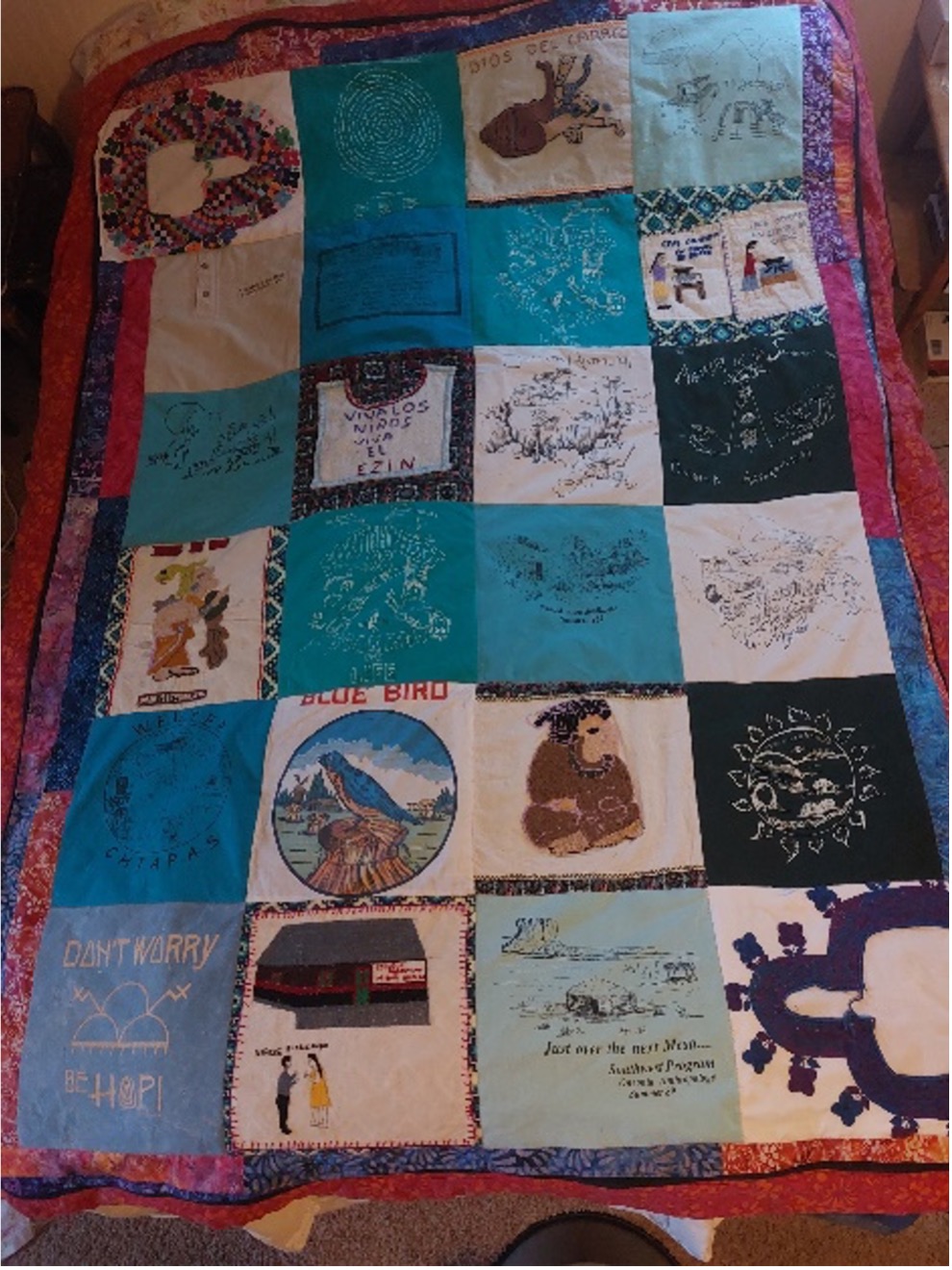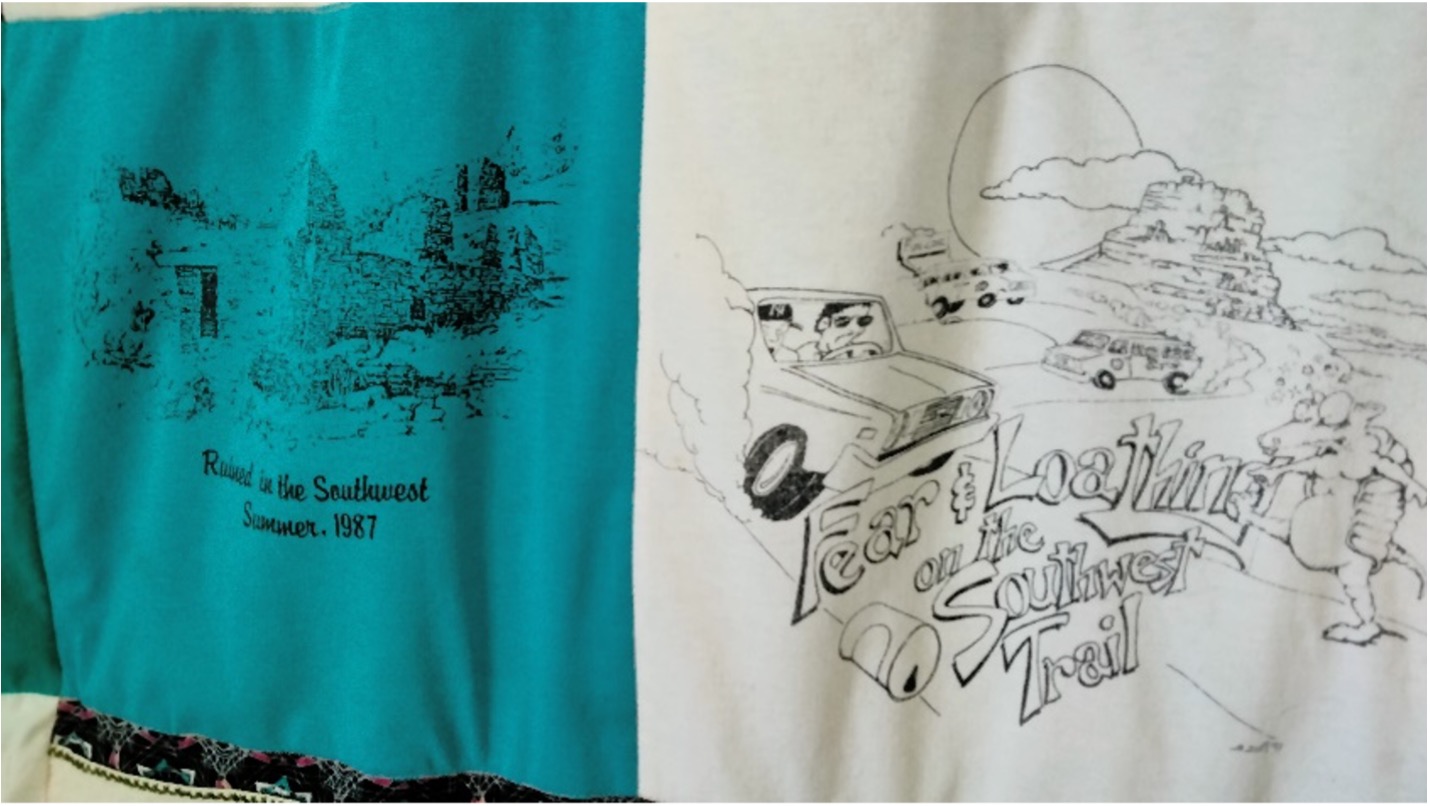An account is required to join the Society, renew annual memberships online, register for the Annual Meeting, and access the journals Practicing Anthropology and Human Organization
- Hello Guest!|Log In | Register
Editor’s Notes: Will the Southwest Remember?
 Jeanne Simonelli
Jeanne Simonelli
Orit Tamir
I went on the Southwest Field Program and all I got was this lousy tee shirt...a whole pile of them. In truth, neither the field program nor the tee shirt was lousy. But when time came to sort through my “stuff” going back about 35 years, I wasn't sure what to do with the many memories of the Southwest Summer Program. The same went for the embroideries that were recollections of years and friends in Chiapas.
The Southwest Program was a product of one of my mentor’s dreams. University of Oklahoma archaeologist Rich Pailes always said that the only way to teach about the greater Southwest was to get a bus, put a library in the back, add some bunks and visit the sites, sounds, and stories of the region. In 1985, I got 4 vans from SUNY-Oneonta and the Southwest Program was born. In each program a budding anthropologist/artist designed the commemorative shirt.
 I started going to Chiapas in 1997 and was mesmerized by the weavings and embroideries made by friends and those who became extended family. Many of these became gifts, but others wound up in the “what to do” pile. A few years ago, my older daughter Elanor grabbed them all, added a fleece blanket from the Navajo Flea Market in Gallup, and that was that.
I started going to Chiapas in 1997 and was mesmerized by the weavings and embroideries made by friends and those who became extended family. Many of these became gifts, but others wound up in the “what to do” pile. A few years ago, my older daughter Elanor grabbed them all, added a fleece blanket from the Navajo Flea Market in Gallup, and that was that.
This Christmas, she and my elder Grandling, Quinn presented me with the results of the stash of tees and embroideries. It’s a wall quilt made from all the years of memories and experiences, from the first “Ruined in the Southwest” through “Fear and Loathing on the Southwest Trail” and on to baby bibs and embroidered children playing in front of a Zapatista school. Lined with the fleece blanket, it makes me think of the more than 150 students who traveled and camped and explored with me at a time before smart phones and internet kept us all connected. Thanks to all of them, some with PhDs and others with families and jobs and some heading towards social security, for wonderful months on the road. To younger faculty, please keep those field programs coming!
 There are a number of slogans and phrases that are reminders of those days. Where’s Alan? Close the coolers! Do we have to put up the tents? Quince minutos….solamente! As Orit and I continue to edit the News, other slogans come to mind: Put it in a word document! Make sure your name is on it! From student days, through retirement, we’re all really busy. But please do try to remember the little things as you get your submissions ready for us as 2023 moves on, in the Southwest and around the SfAA world.
There are a number of slogans and phrases that are reminders of those days. Where’s Alan? Close the coolers! Do we have to put up the tents? Quince minutos….solamente! As Orit and I continue to edit the News, other slogans come to mind: Put it in a word document! Make sure your name is on it! From student days, through retirement, we’re all really busy. But please do try to remember the little things as you get your submissions ready for us as 2023 moves on, in the Southwest and around the SfAA world.
It’s the New Year and the wind is howling in northern New Mexico, as if spring winds that fueled last year’s historic Hermits Peak/Calf Canyon Fire are already here. U.S. Forest Service prescribed fires exploded during last spring high winds (common in the region) into the largest wildfire in New Mexico’s history. The fire torched the land, and thousands of people from small mountainous villages were forced to evacuate. Many lost homes, ranches, and small farms that were held by their families, in some cases, since the arrival of the conquistadors. Even historical acequias were destroyed or damaged. In short - lives were upended.
The record-breaking blaze ultimately burned through more 341,471 acres – more than 530 square miles. Experts say that the environmental impacts will last for generations. The sociocultural and socioeconomic effects are immeasurable, and probably under-studied. Many impacted residents are still struggling with the aftermath of the fire and the floods that followed. Countless had to relocate and find alternative homes and jobs – I know of folks who left the state and do not plan to return.
To add insult to injury, getting compensation and navigating FEMA’s regulations and bureaucracy have not been easy. To this end, New Mexico’s Attorney General asked the government to make changes to rules the U.S. government proposed as it processes damage claims from historic wildfire a federal agency ignited. New Mexico’s Congressional delegation formally asked FEMA to do more to help people who were hit hard by the fire and who find it difficult to navigate the agency’s bureaucratic labyrinth. Life is far from being back to normal after the fire.
There are growing concerns regarding the limitations on damages the U.S. government offers, the appeals process needs more clarity, and there are questions over the leadership of the team that will oversee the claims process, and so on. When addressing the compensation process and future U.S Forest regulations in the region, the U.S government needs to address all these issues. It also needs to account for the distinctiveness of this vast mountainous region where unique culture and traditions are entwined with the biotic environment when addressing the compensation process. Meantime, a few days ago afire has broken near the Hermit Peak/Calf Canyon burn scar, temporarily closing the highway. We can only hope that winter moisture and sane burn practices will keep this tragedy from striking again.

Cart
Search